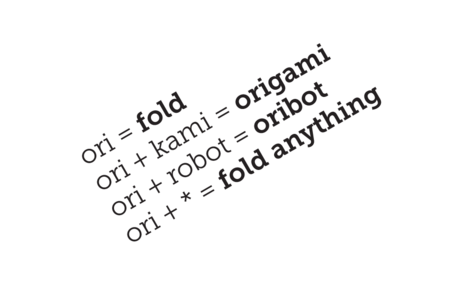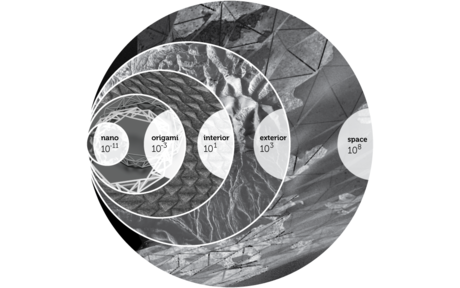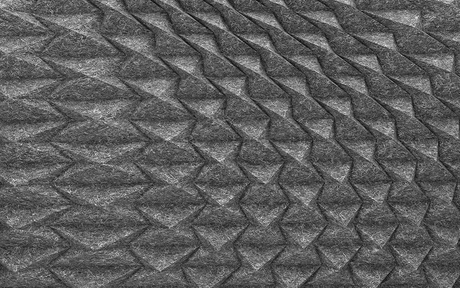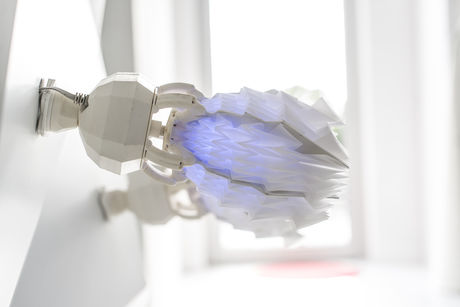
Folding is a language of structure. This is the central tenet in an ongoing field of artistic research that to date has been known as oribotics–a conjunction of technology and tradition expressed as the robotisation of paper folding. If folding is a language of structure, then what is the syntax and grammar, and where is the dialogue? This project was funded by the FWF PEEK program in 2013 aimed to uncover the meaning behind folds in art, science and nature.
This site contains a collection of art science research that investigates the aesthetics and language of folding and technology. These are documentation of art science experiments using our methods of Science into Art, Research by Making, Research by Teaching and theories developed during the research. They are presented as video documentation, photographs and published research. These artefacts and research are selectively available for exhibitions, collaborations and inclusion in future publications. We are open for collaborations, please contact us.
Oribotic Instruments
What does it take to create self-aware robotic instruments out of a piece of paper? A workshop was only the start of a new type of avant-garde robotic origami music performances.

Inside Futurelab 25th Anniversary Series Episode 5 Computation and Beyond
How can we inspire people to actively and collectively design our future? This fifth episode of the Ars Electronica Futurelab’s 25th Anniversary Series, Computation & Beyond, addresses this far-reaching and highly important social question. Difficult or elusive content often requires a change of perspective in order to affect.
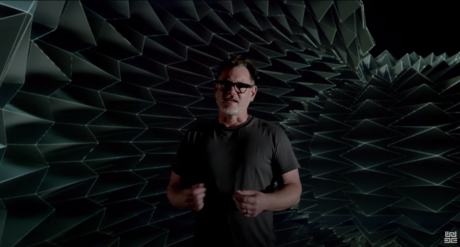
Oribotics the art and science of origami robotics
ORI*BOTICS, the art and science of robotic origami, is a follow-on research project that continues the investigation of origami, technology and nature. It extends on our novel methods for designing and making strong, flexible and highly irregular origami from textiles and 3D printing, namely Fold Printing and Fold Mapping.
This project is supported by the FWF (Austrian Science Fund) PEEK program. Grant number AR590.
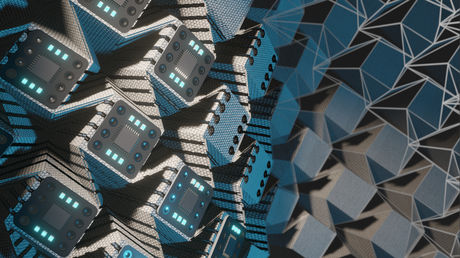
ORI*sense
ORI*Sense is a design for a mobile shape display that not only carries information with its transformation, but also introduces new interactions with digital devices through flexible features - by exposing haptic interface elements such as buttons, potis and sliders on top of both flat and curved surfaces, depending on the stage of the application.
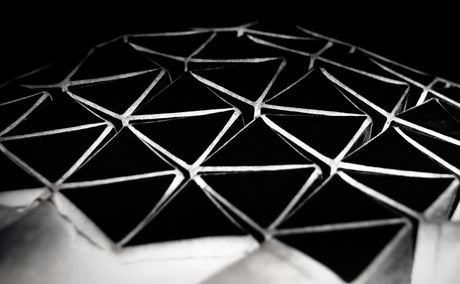
ORI* Volume 1
ORI*
The Art and Science of Origami and Technology
Works 2015–2017. Volume 1.
ISBN: 978-0-6484076-0-7
Author: Matthew Gardiner
Contributors: Rachel Hanlon, Hideaki Ogawa, Roland Aigner, Erwin Reitböck, Takayuki Ikegawa, Kyoto Design Lab, Christopher Lindinger, Horst Hörtner.
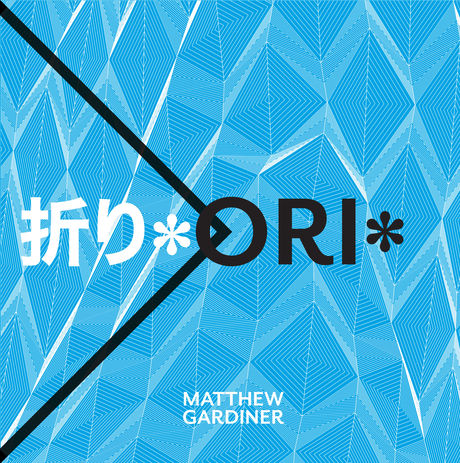
Ars Electronica Home Delivery 2020
Matthew Gardiner presents a summary of past and upcoming work in Oribotics: the art of Robotics and Origami for Ars Electronica Home Delivery. Recorded live between Studio in Australia and Ars Electronica in Austria.
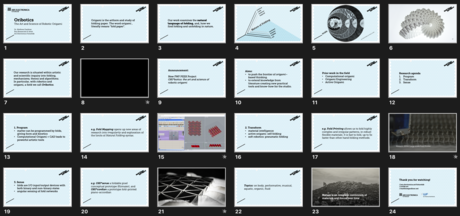
ORI*vertex
Proof-of-concept Parametric Designs for origami headwear with various periodic Tessellations are illustrated in pairs of mesh and crease pattern. From left to right, top to bottom: design-to-fit surfaces of target geometry and 3D scan data; Waterbomb pattern; Kresling pattern; low-resolution Yoshimura; medium resolution Resch4; high resolution Resch4 pattern.
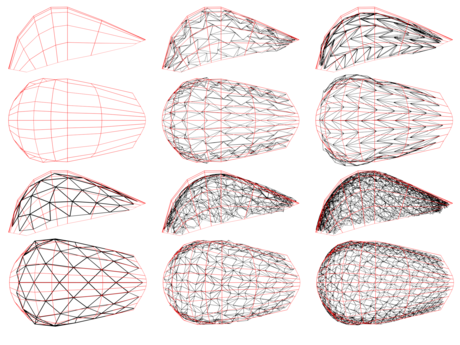
The Folded Geometry of the Universe
The inspiration for The Folded Geometry of the Universe came from examining the scale of folds in nature as criteria to understand folds. We theorise that folds exist at all scales of nature, from the nanoscale of folds in strings of DNA, pleats in paper at the origami scale, craggy mountains and valleys folds formed by the awesome crushing power of tectonic plates, and much much larger it is theorised, that the shape of the universe is folded, that gravity and dark...
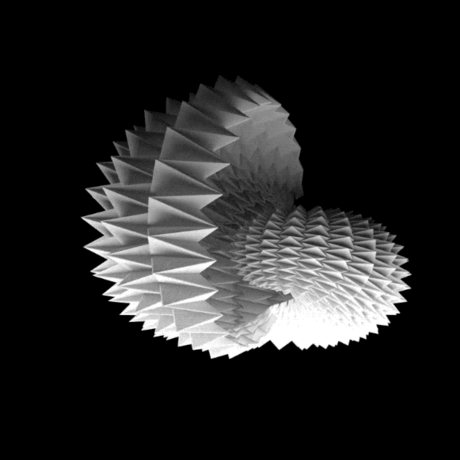
ORI*fox
To intersect with the curatorial framework, the Artist Lab Matthew Gardiner presentation at the Ars Electronica Festival in 2016, we selected fashion made from new technologies as to frame the inquiry. The results were two objects: ORI*fox and ORI*vertex.
ORI*lab Masterclass
We offer insight into our research and development process, and actively pursue it with the method of learning by teaching, by conducting a masterclass in-situ with participants selected by open call.
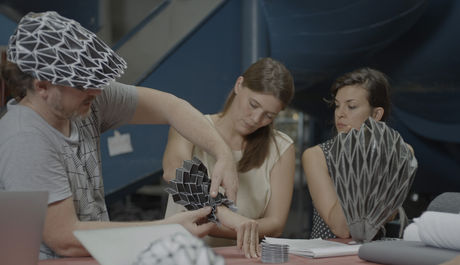
Kyoto 2016 Workshop
ORI* research extends in many directions and fields of research, humans have studied nature and discovered folds at all scales of life. We examine those folds, with a view to understand how they might help us code matter to develop new ORI* concepts that are programmable, transformable, and sense-able.
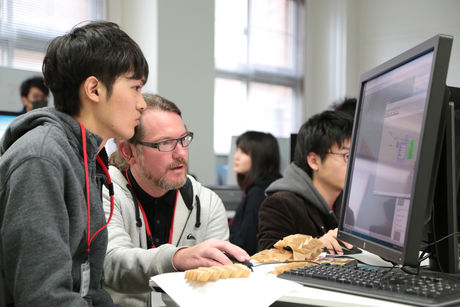
Artist Lab Matthew Gardiner
Our research begins with the premise: folding is coding for matter, an idea emerging from computer and molecular science, pointing to the idea that materials perform computation and ORI*, is a functional aesthetic way to sense, program and transform the code of matter.
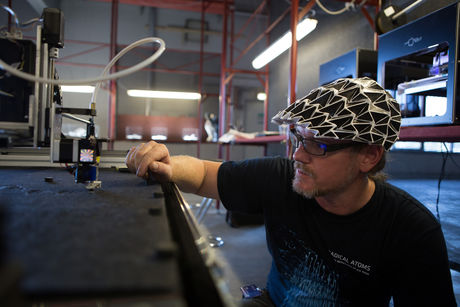
Publications
An overview of main research areas broken down into topical areas of interest: Oribotics, Fold Mapping, Fold Printing, and Soft Robotics. A complete list of publication is also available on this page.
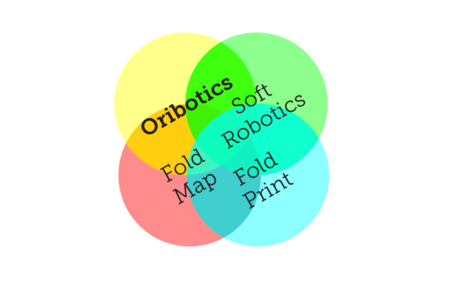
Fold Printing
Computational Origami invents a new kind of complexity: the highly irregular crease pattern, posing a significant challenge to foldability. We design a method for digital fabrication of multi-material composites to overcome issues of foldability and durability faced when producing functional prototypes with paper.
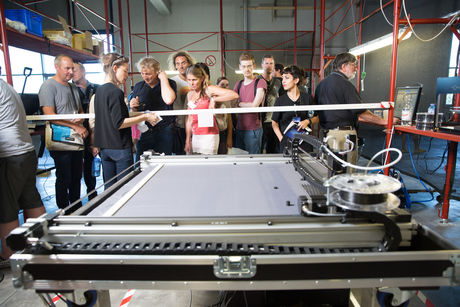
Fold Mapping
We present a design method that prioritises in-context design for origami surfaces with periodic tessellations in a parametric CAD workflow using Grasshopper 3D.
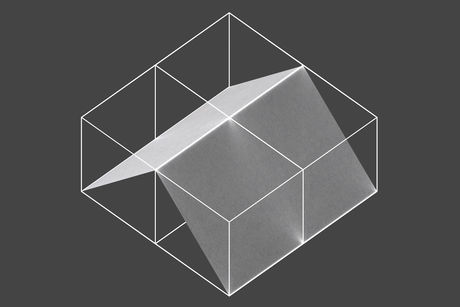
Natural Folding Patterns
pleat
Pleat
Geometry: flat/layered
Force: linear opposing top and bottom forces
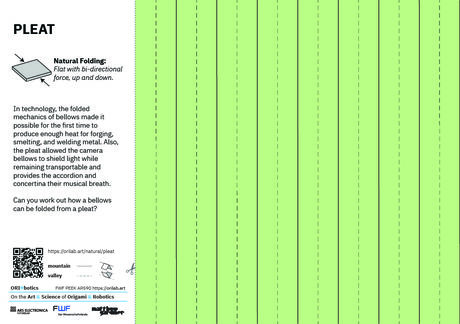
waterbomb
Waterbomb-ori
Geometry: cone
Force: flat-plane axial compression
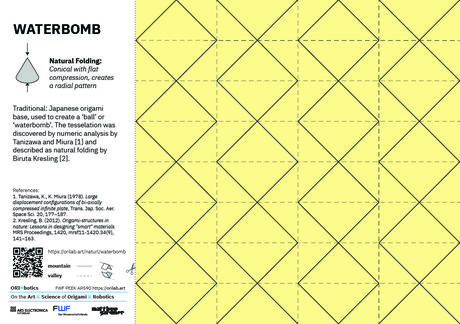
yoshimura
Yoshimura-ori
Geometry: cylinder
Force: axial compression
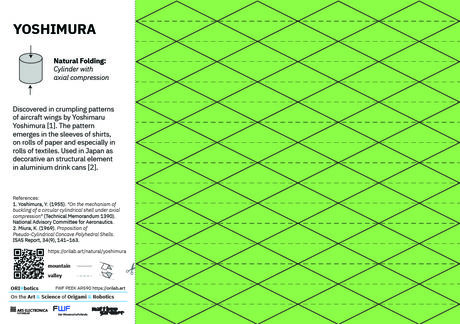
flasher
Flasher
Geometry: flat
Force: rotation of a cylinder or polygon on a sheet
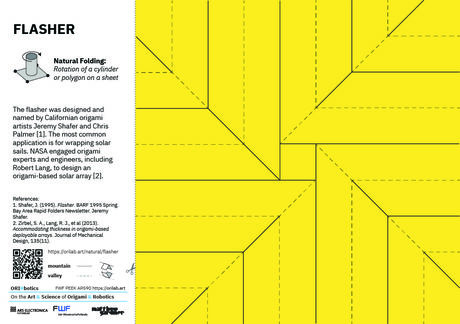
kresling
Kresling-ori
Geometry: cylinder
Force: opposing axial rotational compression
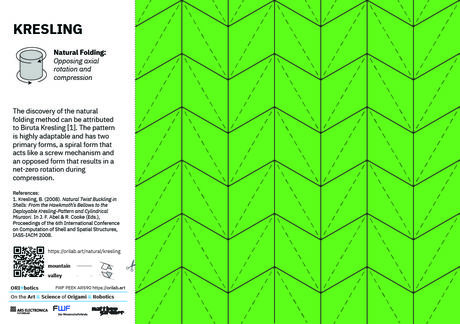
miura
Miura-ori
Geometry: flat/layered
Force: bi-directional compression
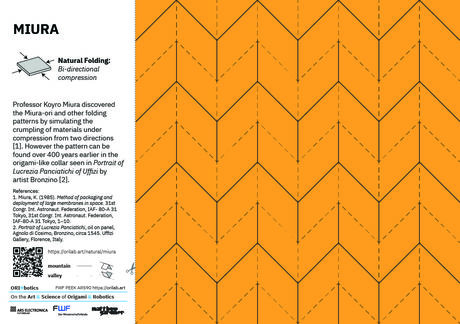
Abstract
This site documents two successive FWF PEEK research projects and this page includes the abstracts from both papers.FWF PEEK AR590: 2020 Onwards
ORI*botics On the Art and Science of Robotics and Origami
ObjectivesWe intend to push the frontier of origami–based thinking. We focus on the field of robotic origami, primarily a field of scientific and engineering discourse known by terms such as deployable structures, soft-robotics, active origami and rigid origami. We aim to extend knowledge from literature to develop new approaches and create practical tools and know-how for the studio.
Theoretical framework
There are many open problems in robotic origami. In our previous PEEK project AR272-G21, we identified three problem areas:
- Program: matter can be programmed by folds, giving form and kinetics. Computational Origami applies optimisation algorithms to solve design constraints, that when combined with CAD tools, can become a powerful artistic tool.
- Transform: folds possess shape-changing, morphing functions that afford actuation by robotic means. Active Origami applies material science to create multi-materials that self-fold. Soft-Robotics combines materials to create pneumatic systems of actuators. Multi-material programming should focus on high quality and durable methods, using digital and traditional fabrication.
- Sense: folds are an I/O input/output device with a non-binary state. Sensor networks in folded material will provide many possibilities for interactions in sculptural, musical and performance-based prototypes.
Experience in the field allows us to create specific questions to address problems that cross one or more key problem areas, for example, addressing transform and sense: What technology and fabrication techniques are required to create a seamless sensing interaction with a fold, such that the fold embodies a device based implementation of a switch with both binary and continuous states.
Approach and methods
Our method is to investigate literature of technical and conceptual interest, then to create a cycle of invention-based iterative prototypes that are evaluated according to artist-defined criteria to assess technical and aesthetic qualities.
FWF PEEK AR272: 2014–2018
About ORI* on the Aesthetics of Folding and Technology
The model for the sciences of matter is the ‘origami’ as the Japanese philosopher might say, or the art of folding paper.-Gilles Deleuze. The Fold, Leibniz and the Baroque.
Folding is a language of structure. This is the central tenet in an ongoing field of artistic research that to date has been known as oribotics–a conjunction of technology and tradition expressed as the robotisation of paper folding. If folding is a language of structure, then what is the syntax and grammar, and where is the dialogue? The syntax and grammar we can uncover, step by step, and appreciate an overall aesthetic of this language, the geometric forms, stylistic triangular faces, and curved lines are found in the folding vernacular. The dialogue is harder to visualise, the process of folding and unfolding reveals to us the relationship between the interconnected and simulataneous arcs of folded movements. It is precisely this dialogue that oribotics has been pursuing through reasearch into folds, fabrication, electronics, pleating, computation, and interactions, and it is precisely this dialogue that it will continue to develop, along with a theoretical frame of folding that aims to be of benefit to practitioners in the arts, design, architecture and also the associated fields of mathematics and scientific origami.
- Matthew Gardiner
Folding is also a language of nature. As a higher level expression of genetic code it defines the sculpture of genetic expression. This analogy to genetics, does not translate in a formal sense directly to sheet folding like origami, as genes are not made from paper or planar forms. However the mechanisms and the notions of programming form and function into nature is a strong artistic metaphor that connects artistic and scientific domains. The principle artists and researcher in this project, Matthew Gardiner, is artist renowned for his innovative work with folding and technology, whose past works have raised these concerns through robotic origami works inspired by biomimetics, morphology, and origami science. Gardiner’s essays and papers have reflected and elaborated on the idea of ‘programming with folds’ , and ‘the structural memory of paper’ and the ‘functional aesthetics of folding’ . The core objectives of ORI* are to construct and stimulate artistic dialogue towards a theoretical framework, in anticipation of, and in reflection on a series of strategically developed artistic micro experiments. The micro experiments can be understood, for those familiar with Gardiner’s work, as an extension of past oribotic research. The expectation is that material research will play a significant role in the experiments, as will folding pattern development, computational origami, and fabrication technology. Additionally, the influences of scientific developments in materials, genetics and synthetic biology will inform the speculative and creative process prior to each micro experiment.
This project’s broader value is to address a global increase in the use of folded aesthetic and function across the arts and design. Beyond paper based origami, design and fashion appear to hold the critical mass with clothing, interior, furniture and product designs. In reference to the statement above, the basic syntax and grammar of folds are often used, but the understanding of the dialogue between folds is underdeveloped, as is deeper theory and artistic thought. To contextualise the global emergent practice in a theoretical framework is vital to the development of the field. The research institute is the Ars Electronica Futurelab, a global center for excellence with the core concerns of art, technology and society, including the backing of a global network of artists, industry, and resources will ensure success and a significant impact on artistic research globally and within Austria.
Credits:
Project Lead: Matthew Gardiner
Projektteam Ars Electronica Futurelab: Matthew Gardiner, Hideaki Ogawa, Erwin Reitböck, Rachel Hanlon
Gefördert durch den FWF, Programmlinie PEEK, Programm-Management: Dr. Eugen Banauch.
